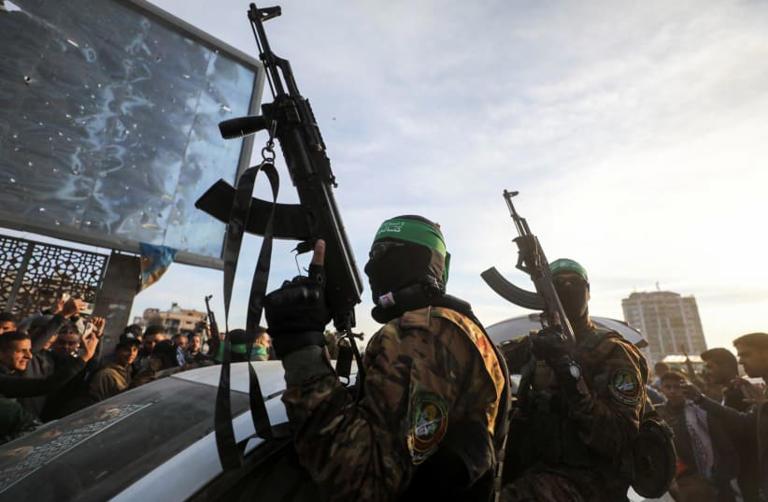
What will be impact of Hamas, Hezbollah ceasefires on one another?
As the Israel-Hamas ceasefire went into effect on Sunday, the 60-day ceasefire with Hezbollah signed on November 27 is set to expire early next week on January 27.
What impact will the two ceasefires, whether they are respected or violated, have on each other?
At press time, the country is still somewhat up against a wall; it is the sole party arguing that Israel has a right and need to remain in parts of southern Lebanon beyond the 60-day deadline due to the slow progress of the Lebanese Army in taking up Hezbollah positions and preventing the terrorist group from retrieving its weaponry.
The Jewish state has repeatedly said it might need to stay there longer, maybe even another 30 days, to ensure the Lebanese Army does its job.
While the US was initially sympathetic to Israeli complaints and did put more pressure on the Lebanese Army to comply faster, the bottom line is that officials from both US President Joe Biden’s and US President-elect Trump’s administrations have said they still want the IDF out on day 60.
Hezbollah has threatened, in turn, to restart the war with Israel if the IDF stays in Lebanon past the 60th day, while the UN and France have said that Israel must withdraw, largely ignoring – even more than the US– whether the Lebanese Army and Hezbollah are indeed in compliance with the agreement.
It is not that Israel will not be tough with enforcement on a day-to-day tactical level.
From day one, the IDF responded with severity to Hezbollah about even the smallest violations of the ceasefire deal, killing close to 50 Hezbollah targets in a short period of time.
But all of this is what the IDF could manage during the “life” of the 60-day period when Israel is “supposed” to still be in southern Lebanon.
HOW WELL will the IDF really be able to stop Hezbollah violations of reconstituting its forces in southern Lebanon, especially those done very gradually and clandestinely, once all the soldiers have pulled out?
The army will still be able to carry out drone strikes and limited ground forces attacks from a distance. Still, there is only so much one can catch without boots on the ground, and Hezbollah will have all the time and chances it needs to eventually figure out ways to slip its forces back into southern Lebanon.
All of the above may play out similarly in Gaza.
The IDF will likely fire on Hamas forces that try to abuse the ceasefire to start rearming or to attempt an ambush on Israeli forces, but this will only solve the day-to-day tactical and temporary issues.
In 42 days, all Israeli soldiers are supposed to be on the outskirts of Gaza, and not long after that, they may withdraw entirely to the October 7, 2023, border lines.
This realization is likely to make it that much easier for Hamas to simply wait it out until the military is no longer in a position to prevent it from starting to restore its power.
THERE IS an advantage that Israel has over Hamas that it does not have over Hezbollah.
Theoretically, the IDF, regional Sunni allies, and the West could empower the Palestinian Authority to retake control of Gaza over time from Hamas.
This might not work, but in Lebanon, there seems close to zero chance that anyone is even trying to oust Hezbollah from controlling the country, even as the new president and prime minister were not Hezbollah books.
Simply put, Hezbollah and Lebanon know how to rebuild their country without having to give in to too many external powers’ demands.
Hamas may also maneuver cleverly enough to avoid adhering to external dictations but may at least need to play the game of allowing others into its affairs because Hamas has known sources for rebuilding funds without Israel, Sunni moderates, and the West playing ball.
More explosive scenarios could include Hezbollah restarting its war with Israel. This could put additional pressure on Israel not to press Hamas too hard, least the situation also return to war.
In around 42 days, Prime Minister Benjamin Netanyahu may decide to return to war with Hamas, and this could have unpredictable impacts on the stability of the ceasefire with Hezbollah.
Overall, the most likely parallel impact of the two ceasefires is for all parties involved to avoid returning to war.
All parties involved are tired, and the risk of one failed ceasefire leading to another failed one weighs heavily on their minds.
The question is whether Israel will maintain sufficient readiness to undertake limited and unilateral military action against ceasefire violations so those breaches by Hezbollah or Hamas do not balloon into restoring the threat in the North or the South to where it was before this 15-month war.
Source » msn.com





